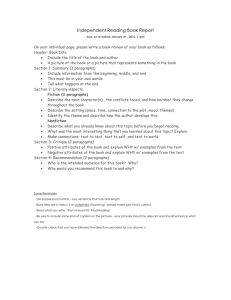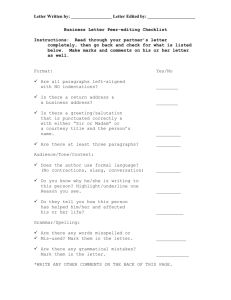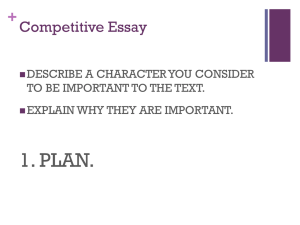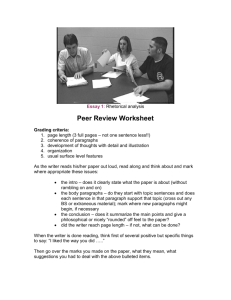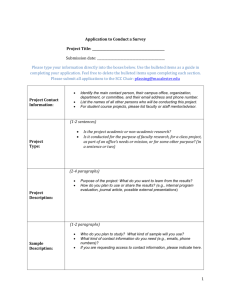FINAL White Paper
advertisement
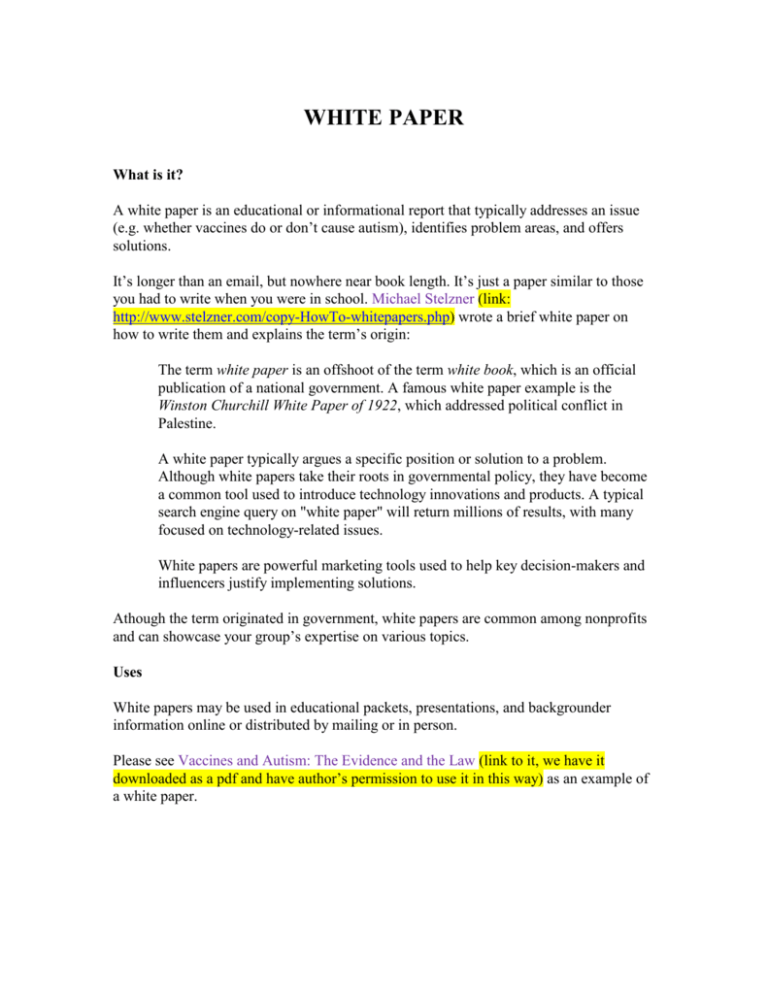
WHITE PAPER What is it? A white paper is an educational or informational report that typically addresses an issue (e.g. whether vaccines do or don’t cause autism), identifies problem areas, and offers solutions. It’s longer than an email, but nowhere near book length. It’s just a paper similar to those you had to write when you were in school. Michael Stelzner (link: http://www.stelzner.com/copy-HowTo-whitepapers.php) wrote a brief white paper on how to write them and explains the term’s origin: The term white paper is an offshoot of the term white book, which is an official publication of a national government. A famous white paper example is the Winston Churchill White Paper of 1922, which addressed political conflict in Palestine. A white paper typically argues a specific position or solution to a problem. Although white papers take their roots in governmental policy, they have become a common tool used to introduce technology innovations and products. A typical search engine query on "white paper" will return millions of results, with many focused on technology-related issues. White papers are powerful marketing tools used to help key decision-makers and influencers justify implementing solutions. Athough the term originated in government, white papers are common among nonprofits and can showcase your group’s expertise on various topics. Uses White papers may be used in educational packets, presentations, and backgrounder information online or distributed by mailing or in person. Please see Vaccines and Autism: The Evidence and the Law (link to it, we have it downloaded as a pdf and have author’s permission to use it in this way) as an example of a white paper. Constructing a white paper [Title] You will want to title your paper, just as you would with any document you produce. First Section - Introduction These paragraphs should objectively introduce the topic. They should introduce the various sides to the issue (if applicable) and explain where things stand today with each side. Second Section - Background These paragraphs illustrate the background or history of the issue by explaining how we got to where we are, what problems we face, significant events in the past that affected the issue or exacerbated problems, and a summary of those problems. Third Section - Solutions These paragraphs explain the solutions to the problems identified in the previous section. As there are usually multiple sides to the problems, there will likely be multiple solutions. Fourth Section - Outlook These paragraphs talk about the future and what hope it holds, cover the main points of the paper, and indicate what the outlook is for each. Fifth Section - Summary These paragraphs summarize the paper. Your group’s commitment to the issue can also be expressed, along with your group’s accomplishments in this area and any boilerplate that you’d like to include.
